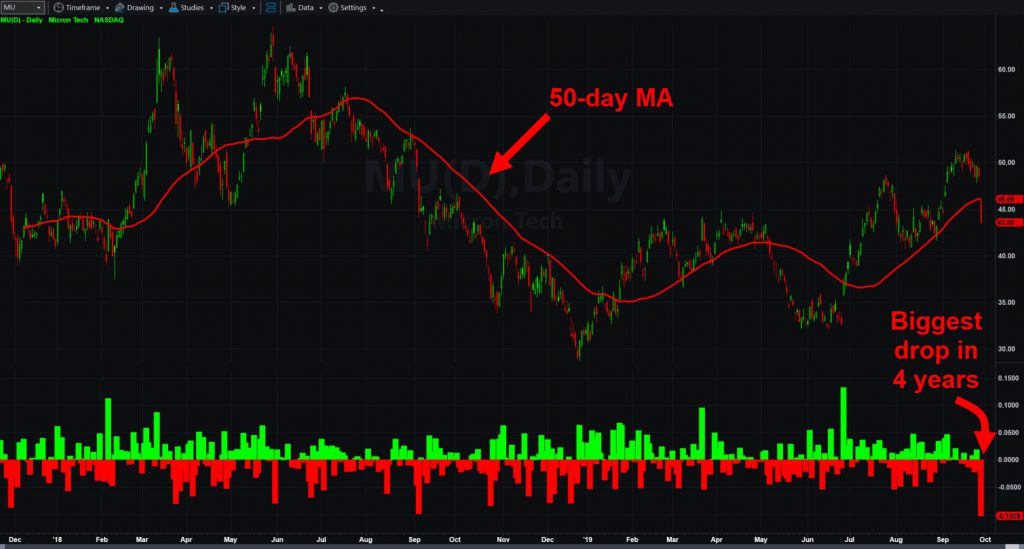Investors just got a timeline for the most important concern facing the market, President Trump’s trade war with China.
Last night, CNBC reported that Vice Premier Liu He will visit Washington on October 10 and 11. Those are the first specific details the talks since both countries announced them early this month. CNBC cited unidentified sources.
The talks are key because trade disputes are paralyzing the world’s two largest economies. China has admitted it will struggle to keep growing if access to the U.S. market is limited. Its industrial profits and production numbers have also slowed, creating risk of business failures and defaults.
The tariffs are hurting American business confidence and slowing investment. Recent data suggests some of those worries may be spreading to U.S. consumers. That could be a problem for the market because consumer spending is the most important part of the economy. We’re also entering the key holiday-shopping season, which makes the October talks even more important.
Signs of Progress?
Tensions between Washington and Beijing have apparently calmed in the last two months after more than a year of worsening. In some cases, officials have delayed tariffs. In others, they’ve kept duties in place but not enforced them. Both countries have also said U.S. agricultural exports will increase, especially soybeans (@S).
There have been bumps along the way, like a Chinese delegation unexpectedly skipping a farm trip on September 20. Today other reports said Trump may block U.S. investment in companies like Alibaba (BABA).

Trade uncertainties come to dominate sentiment because it impacts so many companies in so many ways.
First, there are companies that do business directly in the country. These include names like BABA or a range of semiconductor companies. Just today, for example, memory-chip maker Micron Technologies (MU) crashed after losing access to Chinese tech giant Huawei.
Apple (AAPL) is impacted because it wants to sell more iPhones in China, one of the markets it has room to grow. AAPL also relies on the country as a manufacturing center.
Retailers, Banks and Earnings
Next, there are retailers that source merchandise from China. They were mostly exempted from tariffs until August.
Interest rates is perhaps the biggest part of the story because weakness in China means global borrowing costs remain low. That, in turn, makes it harder for banks to generate profit from lending. So, ironically, domestic financials may stand to gain the most from a trade deal with China.
Low rates have also increased the appeal of sectors like utilities and safe-havens like gold. All of those could be impacted by a trade deal.
The final thing to remember is that earnings season begins in mid-October. Don’t be surprised if management teams and analysts complain about tariffs more than ever. That also raises the stakes because investors could easily ignore those worries the second a deal is reached. Or, vice versa.
In conclusion, markets are unusually paralyzed by the China issue. The good news is traders may finally have the start of a timeline toward resolution. While there’s still plenty of uncertainty, we have a little more clarity now than before.



























